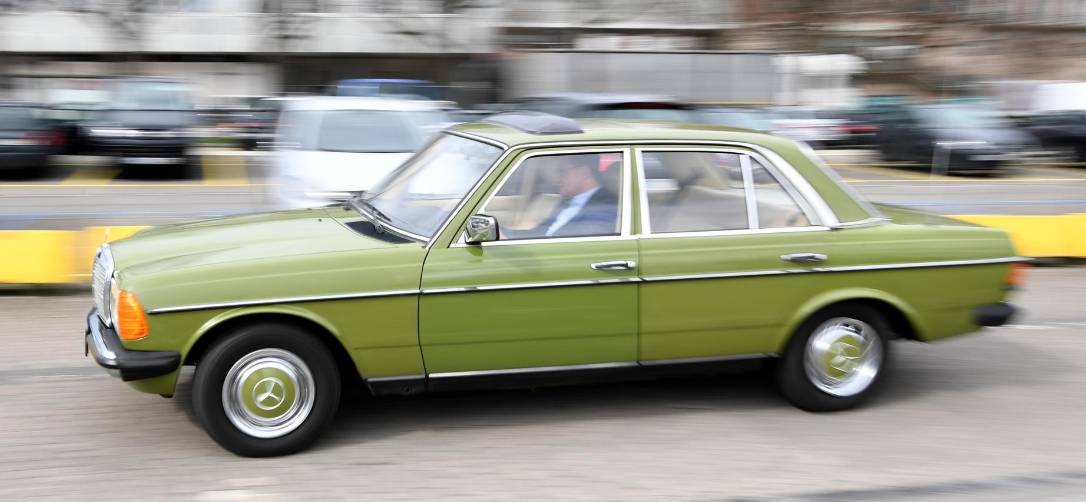With an H license plate, owners of cars that are at least 30 years old can save on taxes. Regardless of their emissions, in Germany vintage cars can also be driven in environmental zones. Environmental groups are therefore calling for stricter requirements.
Vintage breakfast in the Motorworld in the north of Munich: The bodies sparkle, here and there dice or a dancing Elvis dangle from the rear-view mirror, the smell of coffee and croissants lingers. Motorworld is an experience center for mobility in the listed building of the former railway repair shop.
There are around 200 cars and a few motorcycles in the parking lot in front of it. In between, classic car owners and fans stroll, some with prams, others with cameras. An elderly man leans against a dashing car.
“This is a Corvett C3, Collectors Edition, last series to be built. Fascination: The shape is simply beautiful, and easy to keep the old things alive. That’s still driving a car, no little helpers, no electronics. Just the feeling with something like that. It’s different than sitting in such a modern car.”
Preserving historic vehicles, experiencing the special driving experience and, above all, nostalgia – these are common reasons for owning a classic car. The cars are also an investment and sometimes a memento. Uli is sitting in a red convertible with his two daughters Laura and Eva and son Felix.
“Here we have an E30 convertible BMW from 1991. Now brand new with an H license plate. My father bought it after he had to hand the Golf Cabrio over to me after I got my driver’s license in 1997. And we’ve owned the car ever since.”
H license plate enables money savings
Since 1997, owners of historic vehicles have been able to apply for an H license plate and have their vehicle tax rate capped at a flat rate of 191 euros. With a regular number plate, however, the tax rate is calculated based on the size of the displacement. Owners of large classic cars in particular can save a lot with the H license plate, says Haiko Prengel. He is an author and writes as a journalist for various major daily newspapers about mobility, traffic and vintage cars.
“The engines used to be bigger. For example with the old American sleds, these road cruisers that you might also know from the old American films. A displacement of five or six liters was standard back then, always a V8 until the late 1970s, until about then the first oil crisis came and so on. The H license plate is very worthwhile because otherwise they would easily have to pay 1,000 euros in vehicle tax.”
Only cars that were first registered at least 30 years ago get an H license plate. The classic car appraisal is also a prerequisite: Recognized experts, for example from TÜV or DEKRA, check whether the body, chassis, engine, brake system, steering, tyres, electronics and vehicle interior are historically correct. A retrofitted air conditioning system or a modern radio fail. Unless the changes correspond to the time.
Opel Manta – it has to be contemporary
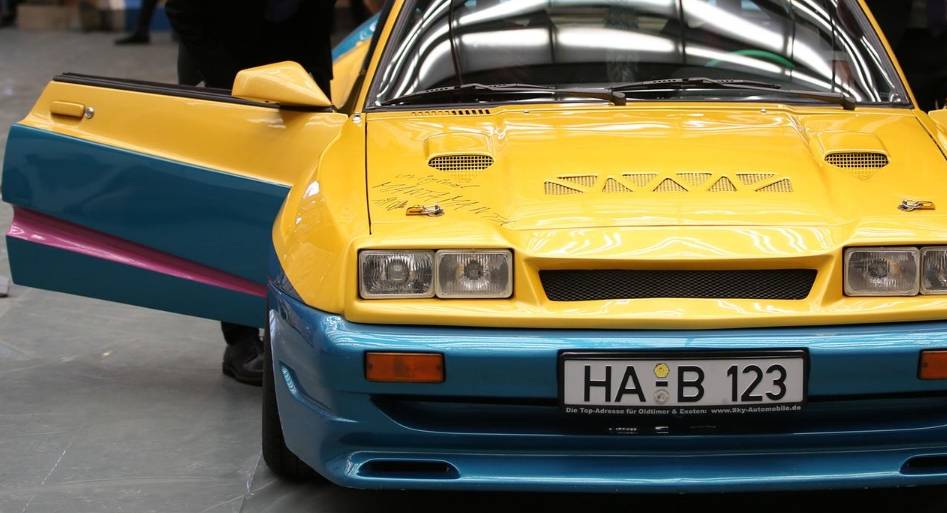
“For example the Opel Manta, everyone knows it from the movie ‘Manta Manta’. Those things are always tuned, they were already tuned back then with foxtails and lowering and wide body and aluminum rims. Can you do anything? It’s not usually a topic either, but it has to be contemporary. That means it has to be parts that were available back then, i.e. aluminum rims or something like that, and there can’t be parts that are only available today,” says Prengel.
Like any other car, the classic car must of course also pass the main inspection. The car must meet the regulations that applied in the year it was first registered. In addition, there are a few necessary safety standards, says Mario Theissen, classics consultant at ADAC and former motorsport director at BMW:
“You retrofit certain things. For example, it is mandatory to have hazard warning lights in the car. This is mandatory, also for every classic car. Seat belts may be retrofitted, but it will always be like this: you always have to be aware that this vehicle has to be used carefully in traffic because it simply behaves differently than the average modern car.”
Favorable admission
Most vintage cars are not everyday cars, they are driven less often. That’s why admission is so cheap. And the H license plate brings further advantages for the owner: no matter how dirty, vintage cars with the H license plate are also allowed to drive into environmental zones.
“The H license plate takes into account the fact that these vehicles are generally not moved very much, that they are driven carefully, that they are very well maintained, i.e. that they are in perfect technical condition,” explains ADAC consultant Theissen.
In Germany there are over a million cars that are more than 30 years old. According to the Federal Motor Transport Authority, as of January 2022, almost 650,000 cars with an H license plate were registered, which means that the number of license plates is 57 percent.
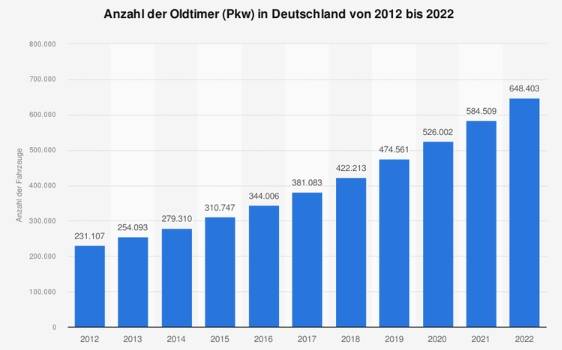
Insurance tariffs often with restrictions
Some cars don’t get an H license plate because they no longer meet historical standards. Sometimes the license plate does not pay off because the regular tax rate is even lower. However, many owners are happy to have their car checked. The license plate upgrades the cars as “historic”. There are also very cheap insurance tariffs – but often with the restriction that the classic car is driven a maximum of 5,000 to 10,000 kilometers a year and that the insured person has a first car.
Many classic car fans have several cars, including Uli at the classic car breakfast in Munich. To the delight of his children. “We still have two others: We still have a Goggomobil and a VW T2 bus,” says Uli. His children say: “Well, I like them both very much! I like both too!”
The beginnings of the classic car scene
The classic car scene was already developing in the early 20th century. The World Classic Car Association FIVA was founded in 1966 to promote the social and political acceptance of classic cars. FIVA, the “Féderation Internationale des Véhicules Anciens” today represents over 1.6 million classic car owners from almost 70 countries on all continents. The various classic car associations in Germany are members of FIVA. The German associations, for their part, represent numerous small clubs and associations.
On Autoscout and Mobile even the percentage of fraud is extremely high. So just as far as vintage cars are concerned, it is alarmingly high.
The journalist Haiko Prengel sees a trend:
“It really has only really become very commercialized in the last ten, 15, maybe 20 years. Also with negative side effects, of course, that prices are simply excessive, and of course people who have no idea are also ripped off from time to time.”
Kay MacKenneth from the Rolling Museum, an association of around 80 vintage car owners, recommends that anyone who wants to buy a historic vehicle, but is not yet familiar with it, should contact a vintage car club in the area. He warns against advertisements on the Internet.
“On Autoscout and Mobile even the percentage of fraud is extremely high. So, especially as far as vintage cars are concerned, frighteningly high.”
Kay MacKenneth not only coordinates the activities of the Rolling Museum, he is also a journalist on classic car issues and runs a workshop for historic vehicles. MacKenneth, for example, uses a 3D printer to print spare parts there. For the reconstruction you need either old blueprints or a scan of the original part, which can then be reprinted true to the original, for example from metal or plastic. A great help when repairing and restoring historic vehicles.
“Well, for a while, around the beginning of the 2000s, people started to completely over-restor. So the vehicles looked better than, you could say better than new. Well, completely utopian, with paints that never existed with a chrome shine that never existed because they were actually usually aluminum parts. Or the Americans have even started to chrome the engine blocks.”
The grading system for the condition of classic cars
The condition of classic cars is broken down into five condition grades. A grade of one is given for a spotless vehicle, meaning it looks like new or better. Grade two is awarded for slight signs of wear and so on. Rating four and five means: only limited or no longer roadworthy. An unrestored original is outside of this rating – and is now worth more to many than the shiny chrome Rolls-Royce. The new currency is provenance and rarity, MacKenneth explains.
“I recently saw a Lancia that belonged to the Italian priest. And then you could see from the robe how he always sat by the car and waved and really saw a black spot on the door. That is now what is being assigned more and more value.”
Cars are also on display at Motorworld in Munich. There a VW bus, there a so-called barn find, a rather dilapidated red Mercedes – interesting to look at but definitely a condition grade 5. And then the Art Cars: At some point BMW invited artists to design the paintwork of individual BMW series and racing vehicles. A total of 19 BMW Art Cars were created, which were used for advertising and exhibition purposes.
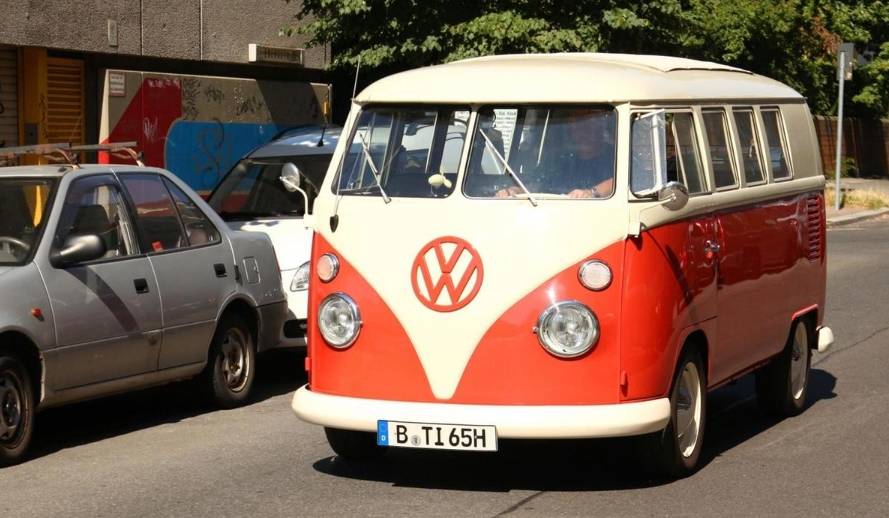
The most valuable car in Motorworld is currently a BMW painted by Andy Warhol.
“So he has an infinite estimate. We don’t even talk about it anymore, because it’s so high that it’s almost utopian. But because this car has almost an absolute originality, it was painted by Warhol. Even if the colors are slowly fading because they are so old, after all it’s been almost 50 years, the car still has an immense value,” says MacKenneth.
The GTA Racing showroom is located in the middle of the Motorworld building in Munich. Checkerboard floors, a shiny red luxury sled and owner Peter Kohlbeck is sitting on a chair right next to it. He is a restorer and dealer of classic vehicles.
“Everyone is trying to create a facility in that area, of course. It doesn’t matter whether it’s the simple one or the multi-billionaire. A simple man buys a Cinquecento, for example, and assumes that if he pays 3,000, 2,000 or 1,000 euros now, in a year or two he will perhaps get double, triple or quadruple that amount. It’s the same with a billionaire. He then goes to the front, gets a McLaren or Bugatti and assumes that he might pocket a million more for it. The conditions are adjusted accordingly.”
Voices on the environmental and climate aspects of vintage cars
In the large hall of Motorworld, a DJ plays hits from the 1950s and 1960s on an orange-colored, of course, historic truck. couples dance. There are a few car spotters out there – mostly men but also one woman with cameras looking for rarity cars. In this shiny chrome world, it is not easy to find critical voices – for example on the subject of environmental and climate protection. Is a classic car possibly even quite environmentally friendly when it is already there, which means that it no longer has to be produced and does not consume any new resources?
The influence on the traffic turnaround is very small for vintage cars. The reason for this is that vintage cars actually only make up one percent of the entire existing fleet in the passenger car sector and therefore have little influence on the traffic turnaround or on the hotspot problems in the inner cities.
A call to Helge Jahn from the Federal Environment Agency:
“There is no specific figure for how many kilometers you should drive your old car. But it is clear that when you decide to buy a new car, you first decide in favor of a car that is more environmentally friendly in terms of emissions. When it comes to climate protection, you have to look: How much less does the car actually consume compared to the old car. And here, above all, the consumption of the old car and its real fuel type, then the size of the new car and its fuel type, and of course the annual mileage are relevant.”
“Low impact on traffic turnaround”
There are too many parameters to give a general answer to the question. Most of the time, however, it does not arise, because many classic cars are second cars for the weekend tour or for classic car meetings. Doesn’t driving as a hobby contradict the turnaround in traffic?
“The influence on the traffic turnaround is very small for vintage cars. The reason for this is that vintage cars actually only make up one percent of the entire existing fleet in the passenger car sector and therefore have little influence on the traffic turnaround or on the hotspot problems in the inner cities.
But the number of H license plates is growing steadily. In 2022 it was already ten percent more than last year. But that’s not a problem yet, says Jahn. “It may be different in 10 or 20 years. If today’s modern cars are still being driven and then at some point are registered as vintage cars, there could still be a problem. But that’s not acute now.”
The strong vintage car lobby
Classic cars have a strong lobby: Not only the world association FIVA and the federal associations represent the political interests of classic car owners – there are also groups in the EU Parliament and the Bundestag. Since 2009, the Parliamentary Group Automobiles Kulturgut has been fighting for the rights of classic car owners. The chairman is the CDU politician Carsten Müller.
“The parliamentary group is an informal, cross-party body. We take care of current topics, such as historic vehicles and sustainability. We take care of the questions of approval law, and we are definitely on the road for a practical orientation, but also for a definitely demanding, sharp handling.”
In practice, it can look like this: a 29-year-old car is not allowed to enter the environmental zone if it is too dirty, and a year later, at 30 years of age and with an H license plate, that is no longer a problem. Jürgen Resch, Federal Director of the German Environmental Aid considers these special rules to be absurd.
“Wherever we have regulations for cars in Germany, it is best comparable with the gun laws in the USA. The discussions we are experiencing here are very irrational. Tightening car regulations is almost as difficult as tightening gun-carrying regulations in the United States.”
The German Environmental Aid is committed to nature conservation, biodiversity and clean air. In her opinion, the air in Germany is too dirty in many places. Too high a concentration of ozone, nitrogen oxides and particulate matter is a health hazard. About a year ago, the World Health Organization tightened the limit values, but EU law still needs to be adjusted. Resch is concerned about the increasing number of approved H-plates. He understands rare vintage cars, but there are plenty of cars that are just 30 years old – and the trend is rising.
“The German Environmental Aid is calling for a new regulation for vehicles with the H license plate. Mass vehicles must be exempted and excluded. The age limit was raised from 30 years to 40 or 45 years and finally for all vehicles that drive into cities, the regulation was decreed that they have to be retrofitted in terms of exhaust gas cleaning, just like this also applies to other vehicles that are in polluted inner cities on the way.”
The H mark becomes an E mark
There are even vintage cars that have been converted to electric drives. Then the H-mark becomes an E-mark. However, if you want to keep the old soul of the car, you have to make compromises in terms of environmental compatibility. Without going into too much technical detail: a lot is very complex, but certain changes, such as a retrofitted catalytic converter, are possible. In Internet forums, owners discuss whether this or that change is allowed. For some, the H license plate is more important than the environment.
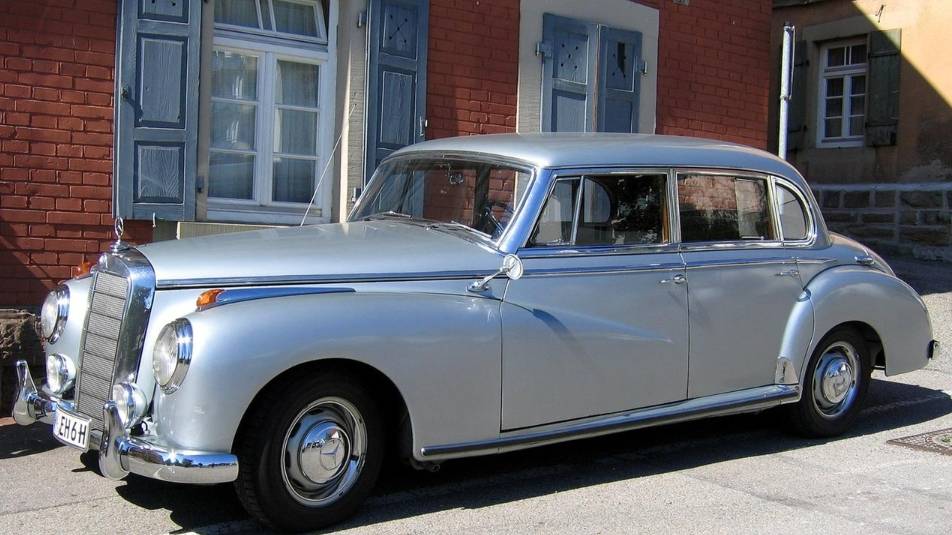
Another topic that is currently being researched a lot – not only in the field of classic cars – are the so-called e-fuels. E-fuels are synthetic fuels that are mostly made from water and carbon dioxide. This requires a lot of electricity – if it is green electricity, the fuel is theoretically climate-neutral, since the same amount of carbon dioxide is produced when it is burned as was previously bound during production.
But that doesn’t do anything for the environmental pollution in the cities, says Jürgen Resch from environmental aid.
“The use of e-fuels in vintage cars brings practically no improvement in air quality, because we also have particle emissions, but above all nitrogen oxide emissions, i.e. without exhaust gas cleaning in the engine, we sometimes have a ten or twenty-fold excess, sometimes more , the limit values for new vehicles. And so vintage cars in the inner cities remain real polluters when it comes to fine dust and poison gas slingers when it comes to gaseous pollutants.”
VW Bulli with synthetic fuel
E-fuels are now a topic in many classic media and clubs. The ADAC has just successfully completed a project: a VW Bulli from 1964, which was powered entirely by synthetic fuel, took part in the Olympic car rally from Kiel to Munich. Carsten Müller from the old-timer parliamentary group drove along at times.
“I believe that e-fuels also play an important role in other transport sectors, in aviation and also in logistics. And that’s why I think this is a topic that needs to be promoted much more intensively, because several technical solutions have to be taken to make traffic and mobility environmentally friendly. This also includes battery-electric drives and hydrogen drives, but also, for example, synthetic fuels.”
At just 15 percent, e-fuels currently have the worst efficiency of all drive technologies. In addition, more than half of the electricity demand in Germany is covered by non-renewable sources. The vintage cars will continue to run on diesel and petrol for the time being. Their number is likely to increase further in the coming years. In the coming months, however, many engines will remain out. The classic car season ends in October – to protect the cars from dirt and road salt. In the end, they are more of a hobby than a means of transportation.
